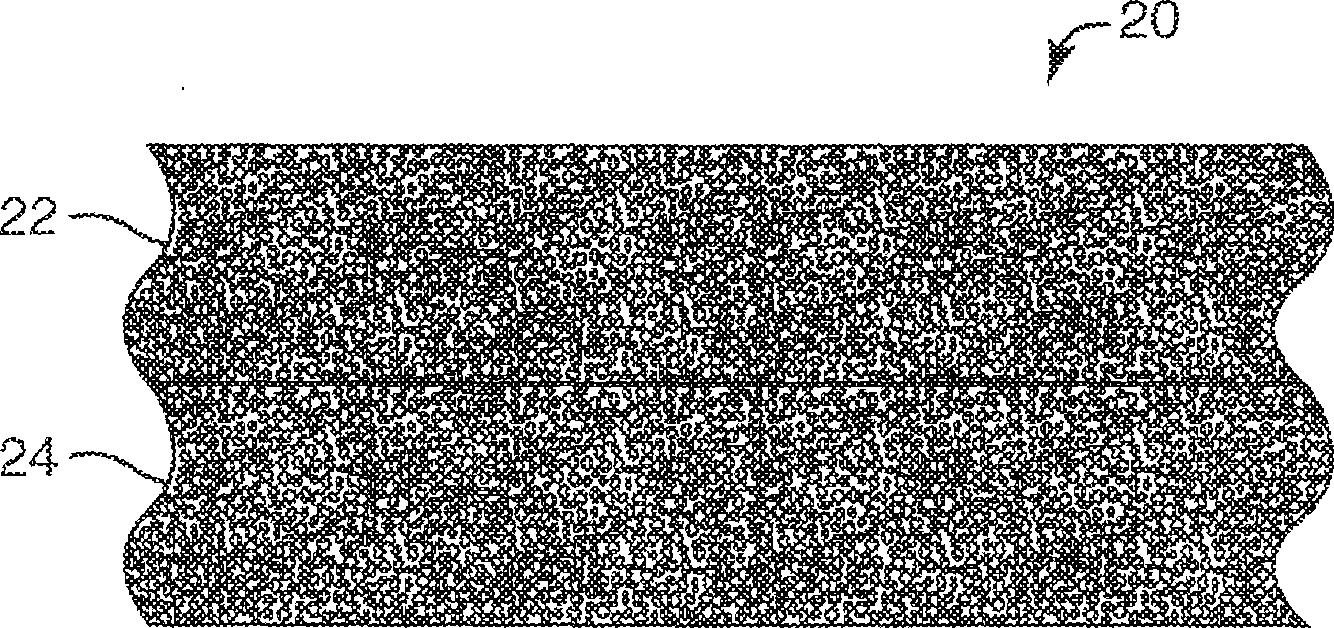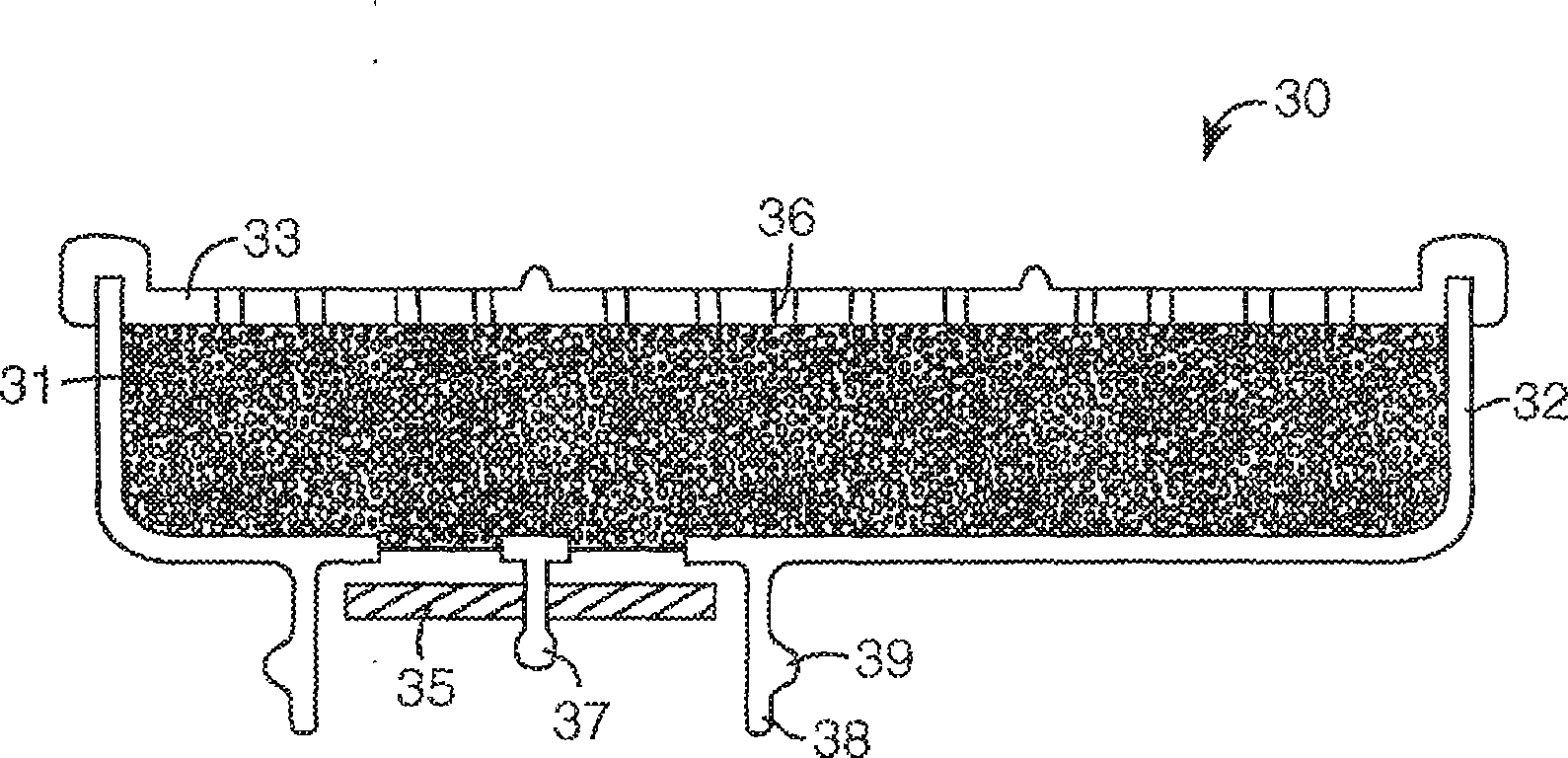Particle-containing fibrous web
A fiber web, non-woven fiber web technology, applied in the separation of dispersed particles, cellulose plastic material layered products, filters for breathing, etc., can solve the problems of large sample variability, large accumulation volume and short service life
- Summary
- Abstract
- Description
- Claims
- Application Information
AI Technical Summary
Problems solved by technology
Method used
Image
Examples
example 1
[0085] Utilizes a meltblown device with a single horizontal strand stream (as shown in Figure 6), a polymer melt temperature at 230-300°C (depending on the polymer and desired fiber specification), a die drilled with holes, and At a distance of 32 cm from the mold to the collector, a mold width of about 300 g / hour / cm was used (for the thermoplastic polyurethane used in Test No. 2, see Table 1 below) and about 230 g / hour / cm A series of carbon-loaded meltblown nonwoven webs were prepared from various fiber-forming polymeric materials extruded at a die width of cm (as shown in Table 1 for the remainder of the polymeric material). The temperature and air velocity of the extruder (and other processing parameters as needed) were adjusted to obtain a web having an effective fiber diameter ("EFD") of about 16 to 29 microns, with most webs having about 20 to 29 µm EFD. According to the method set forth in "Separation of Airborne Dust and Particles" in Bulletin No. 1B, "Separation of A...
example 2
[0098] Various thermoplastic polymers were pressed into discs by pressing extrusion grade pellets obtained from polymer manufacturing plants in a heated laboratory hydraulic press (available from Carver Corporation). The press is equipped with a stainless steel plate covered with a Teflon liner. The thickness of the disc was adjusted using a bump stop made of feeler gauge stock of 0.5 mm. The temperature of the press depends on the particular polymer being pressed, but is generally set at about 200-250°C. A pressure of about 207 kPa and a compression time of about 15 seconds was employed. The resulting resin coupons were folded over and re-pressed until air gaps and other imperfections were removed to form discs of target dimensions of approximately 50 mm diameter and 0.5 mm thickness. The discs were placed in a desiccator and arranged to be evenly exposed to the interior air of the desiccator. A sufficient amount of DMMP to provide a saturated internal atmosphere was also ...
PUM
| Property | Measurement | Unit |
|---|---|---|
| size | aaaaa | aaaaa |
| diameter | aaaaa | aaaaa |
| diameter | aaaaa | aaaaa |
Abstract
Description
Claims
Application Information
 Login to View More
Login to View More - R&D
- Intellectual Property
- Life Sciences
- Materials
- Tech Scout
- Unparalleled Data Quality
- Higher Quality Content
- 60% Fewer Hallucinations
Browse by: Latest US Patents, China's latest patents, Technical Efficacy Thesaurus, Application Domain, Technology Topic, Popular Technical Reports.
© 2025 PatSnap. All rights reserved.Legal|Privacy policy|Modern Slavery Act Transparency Statement|Sitemap|About US| Contact US: help@patsnap.com



